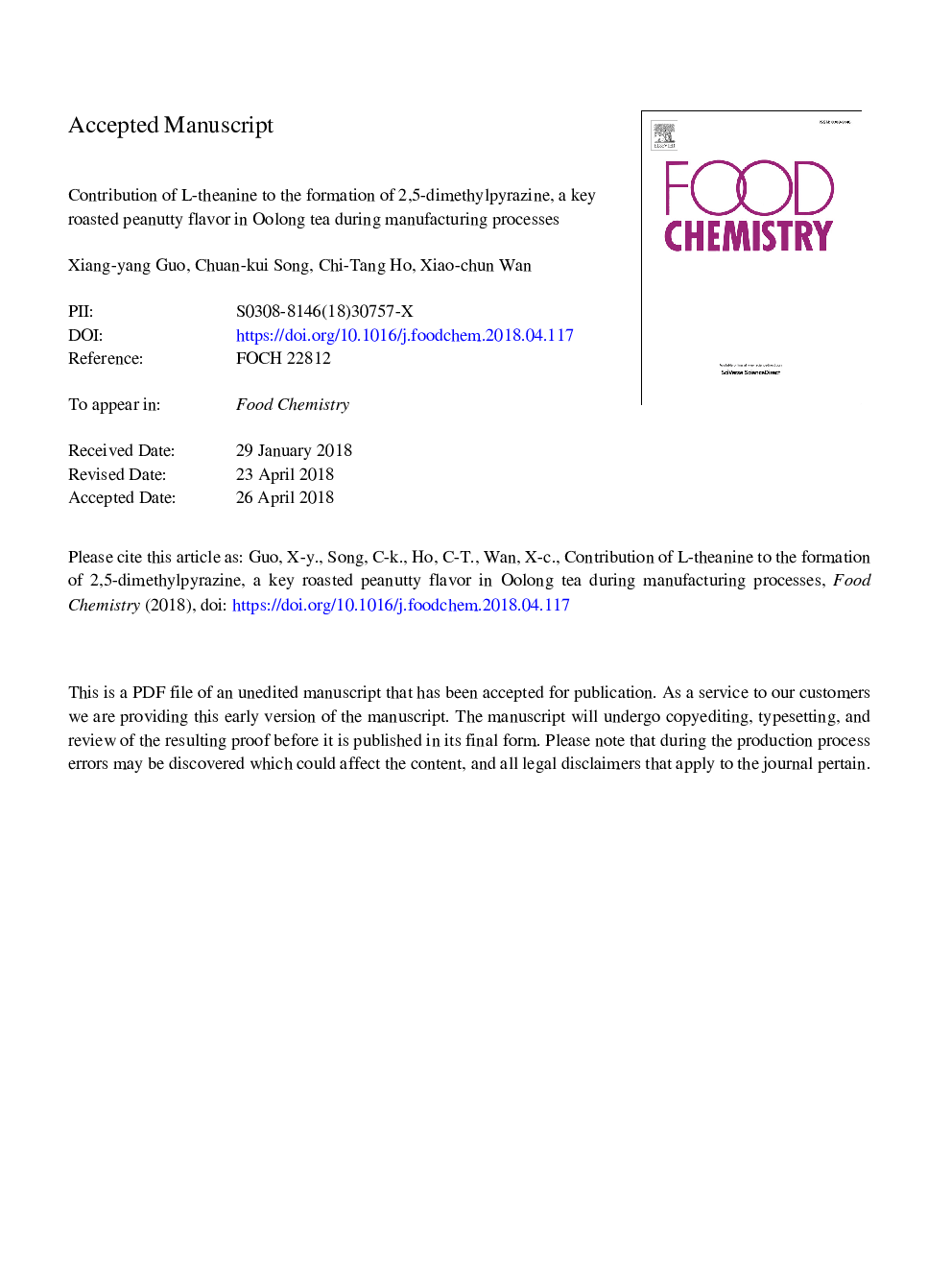| Article ID | Journal | Published Year | Pages | File Type |
|---|---|---|---|---|
| 7584683 | Food Chemistry | 2018 | 39 Pages |
Abstract
l-Theanine, the most abundant amino acid in tea, is widely believed to be associated with the tea taste, however, its contribution to the formation of tea aroma is still unknown. Volatiles were determined and nitrogen-containing compounds formed during manufacturing processes were quantified. Lower levels of total sugar and l-theanine were detected in the Oolong tea product undergoing full fire processing (FFOT) suggesting that l-theanine probably involved in the volatile formation during manufacturing processes. Methylpyrazine and 2,5-dimethylpyrazine, two newly formed compounds in FFOT, together with other volatiles were successfully detected in a model thermal reaction of d-glucose and l-theanine (GT-MTR) but not detectable in thermal reactions with single d-glucose (G-MTR) or l-theanine (T-MTR). The concentration of 2,5-dimethylpyrazine increased significantly by adding additional l-theanine to 2nd roasted tea. Our study demonstrated that l-theanine, at least partly, contributed to the formation of 2,5-dimethylpyrazine, a key roasted peanutty flavor in Oolong tea.
Related Topics
Physical Sciences and Engineering
Chemistry
Analytical Chemistry
Authors
Xiangyang Guo, Chuankui Song, Chi-Tang Ho, Xiaochun Wan,
